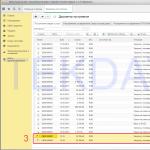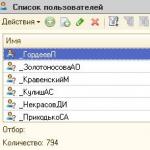Over time, many Mozilla Firefox users accumulate a fairly large history of visits to various sites, respectively a cache, which in turn worsens the performance of the browser. Therefore, many people think about how to get rid of all this. Let's take a closer look at this question.
How to clear the cache in Firefox
The Firefox cache is located in the following location - C:\Users\Your Username\AppData\Roaming\Mozilla\Firefox\Profiles\Your Profile\Cache
In order to clean it, you need to perform a few simple manipulations. Consider the case of Windows 7. The new Firefox has a slightly different interface, so you can access the settings menu in several ways:
- Press the Alt key, after which tabs will appear at the top of the browser, that’s where you look for the one you need – “Tools” and select “Settings” in it.
- In the upper right corner, click on the context menu button (the button in the form of three horizontal stripes) and then click on the “Settings” gear.

After you do this, a window with browser settings will open in front of you.
All that remains is the small matter, in the window that opens, go to the “Advanced” item, then select the “Network” tab and here click the “Clear now” button.

That's all, clearing the Mozilla Firefox browser cache is complete.
Sometimes you are simply too lazy to clear the cache in Firefox; to do this, you can set it to automatically delete it.
Automatically clear cache in Firefox
In the same settings window, go to the “Privacy” item, in the drop-down list select “will use your history storage settings.” After selecting this item, you will have additional settings. Check the "Delete history when closing Firefox" checkbox.

After this, the “Options” button will become active, click it.

In this window you should only check the “Cache” item and click “Ok”. That's it, automatic cache deletion is configured.
Interesting!
In order to see what is currently in the cache of your firefox, just enter the following in the address bar - about:cache.
Cleaning Firefox is a mandatory preventative procedure. It allows you to completely clear directories of temporary files. Partially helps improve the performance of Mazila Firefox, ensuring security and privacy while surfing the web.
This article will tell you how to clean Firefox completely using standard settings and third-party utilities, including viruses, and also how to perform selective cleaning in Mozilla (for example, remove only autofill data, passwords, cookies, etc. .), how to restore default browser options settings.
How to selectively clear your web browser?
Story
To get rid of a group of posts and individual links in a web log:
1. Go to the menu: Log → Show all log.
2. If you need to clear a group of URLs by date, right-click the required directory (for example, “Yesterday”). Select "Delete" from the submenu.


Cache
A complete clearing of the cache store is performed as follows:
1. From the menu, select: Tools → Settings.

2. Go to the “Advanced” subsection (list on the left).
3. In the “Caching…” block, click “Clear Now”.

Also run the command with the same name in the next block “Offline web content...”.

Cookies
1. In the settings panel, click the “Privacy” subsection.

3. Click the left button to select the required folder, click “Delete selected”.

This way, Firefox will be cleared of cookies from only the specific (you selected) website.
Add-ons
If you need to clear your web browser of addons, you need to perform the following operations:
1. In the menu, click: Tools → Add-ons.

2. On the tab that opens, in the block of each extension, click the “Delete” button.

Automatic cleaning
1. In the “Privacy” subsection, in the “History” block, in the “Firefox” line, set the value to “will use your settings...”.

2. In the “Save cookies” option, set the parameter “until I close Firefox”.

3. In the “Delete history when closing...” line, click the “Options” button.
4. In the settings window, specify which elements need to be cleared before closing the browser. Click OK.

After such cleaning (automatic), no user intervention is required. The next time you start Mozilla Firefox, it will be “clean”, or partially “clean” (if selective cleaning was set).
Quick manual cleaning
1. In the “Journal” menu section, click “Delete recent history.”

2. In the “Delete” panel, in the “Delete” line, set “All” (clear for the entire period of use).

3. Click the mouse to open the “Details” spoiler. Select the objects you want to clean (check the boxes next to the list items).

4. Click "Delete Now".
Global cleaning with factory reset
If you want to get rid of all the settings created and data saved in the browser, perform a reset:
1. At the top right, click on the “three stripes” button.
2. In the tiled menu, under the icon block, click the “question mark”.

3. From the Help submenu, open the Troubleshooting Information section.

4. On the tab that opens, click on the “Clean Firefox” button.

Advice! If problems occur in FF, in the same tab, use the “Restart with add-ons disabled” option to start it in safe mode. This will make it easier to identify the cause of the profile failure.
5. Confirm the start of cleaning. In the window with the request text, select “Clear...”.

"Cleaning" in FF using the CCleaner utility
You can trust the cleaning program CCleaner to clean your web browser. Its free version is available on the developers’ website (https://www.piriform.com/ccleaner).
1. In the program window, click: “Cleaning” section → “Applications” tab.

2. In the “Firefox” block, tick the objects that need to be “cleaned”.
3. In the left panel, click "Analysis". And when the scan is complete, run the “Cleanup” command.

How to clean from viruses?
In cases where Firefox is infected with malware - adware, hijackers, virus add-ons and toolbars - the cleaning methods described above will not help you destroy them.
To remove viruses in your browser, you need to use specialized antivirus software:
AdwCleaner (can be downloaded from the Malwarebytes website) - quickly detects and eliminates all kinds of browser infections not only in file directories, but also in the registry.

FirerBro - frees browser shortcuts on the desktop from virus add-ons (adding links, keys, replacing the path to the executable file). Activated with one single click of the mouse (the “Check” button).

Malwarebytes is a powerful antivirus scanner. Performs an in-depth scan of system directories and registry keys. Capable of detecting hidden threats that major antiviruses miss.

Don't forget to clean Firefox regularly. It is best to clean up objects after the Internet session ends. If you are not familiar with browser settings, use CCleaner to automatically clean your browser.
Good day, dear visitors!
Today we will find out How to clear Firefo browser history and cache x, which tends to get cluttered from time to time, waste your disk space on storing temporary files, and sometimes cause various errors and problems. I will provide detailed instructions for one of the most famous browsers - Mozilla Firefox. I will explain what exactly should be deleted, in what cases and what the consequences will be. Let's go!
How to clear Mozilla Firefox browser history and cache
You can access the window through which we will delete history and cache in at least three ways. I'll show you the best option.
Click on the three sticks in the upper right corner of Firefox. A menu with parameters is hidden here. Choose Magazine.
Click on Journal, now select Delete history...

And the window we need pops up Delete all history. By the way, the fastest way to call it is to use a hotkey combination Ctrl+Shift+Del, you don’t even need to go into the options and click Log in the menu. This is a note for lovers of hot keys and fast computer work;)

Here you choose how long you want to delete your history and cache - for the last hour, two or four hours, for today or for the entire time of work. I have everything. In details, you can choose what exactly to delete. Then click Delete now.
I will briefly describe the items available in Details:
Log of visits and downloads. The lists of sites you visited, www addresses that you typed in the address bar, as well as the list of downloaded files are deleted. The downloaded files themselves are not deleted anywhere!
Forms and search log. This is the data that you filled in fields on various sites, for example, name, e-mail address, etc. That is, when you click in the input field, a list of the last entries that you typed in this field falls out. These records are erased. The history from the search window at the top is also deleted, from this window:

Cookies. They are cookies, cookies, cookies, cookies :) Thanks to cookies, sites remember you when you log in to them. If you delete all cookies, you will be logged out of all sites that you currently access without passwords (Vkontakte, Facebook, and others). This means that you will have to re-authorize on all sites, remember logins, passwords, appearances... Provided that you do not use a special password manager, of course. Therefore, you can uncheck cookies to keep them.
Cache. It is also known as cache. This is exactly why we started cleansing procedures. All temporary files that are stored when you first visit a resource are stored here - pictures, html pages, videos, javascripts, css files. Thanks to the cache, repeated visits to the same site will be faster. But storing all this garbage wastes precious disk space. Therefore, it is useful to periodically clear the cache. This point is always noted for me.
Active sessions. This means that if you have logged in to any site since the last time you launched your browser, this will be considered an active session and you will be logged out of it. Whether it is marked or not does not make much difference.
Offline website data. Some sites may leave their files for offline work without the Internet. I have never met anyone like this before; the Internet is available almost always and everywhere. Therefore, for me personally, it makes no difference whether this item is ticked or not.
Site settings. The settings of individual sites are cleared, for example, you somewhere set the scale to 150% for a specific site or allowed an exception when blocking pop-ups for another site. These settings are deleted at this point.
Two more ways to bring up the history and cache deletion window
For starters, I’ll describe the longest way to open the Delete all history window. Go to Settings -> Privacy -> click the link Delete your recent history.

No, no, no, that's not all! Did I mention that there are at least three ways to call up the window?)
Firefox is open in front of you right now. Press the left (or right) Alt key and a horizontal menu will appear at the very top. Go to Magazine -> Delete recent history...

Let's sum it up
If this is your personal browser and you are logged in to many sites, then I recommend leaving all the boxes checked except for cookies, so as not to waste time re-authorizing on your favorite sites. The main point here is the cache.
If you are logged in somewhere on someone else's computer, then delete the entire history along with the cache and cookies when you are done. Or switch to incognito mode, then you won’t have to delete it; when you close the browser window, the entire history will be erased.
Did you manage to clear the cache? If you had any problem due to the cache, were you able to solve it? Write, let's discuss.
If you encounter problems with the Mozilla Firefox browser, the easiest and most accessible solution is to clean the browser. This article will discuss how to perform a comprehensive cleaning of the Mozilla Firefox web browser.
If you need to clean Mazil's browser to solve problems, for example, if performance has dropped significantly, it is important to do it comprehensively, i.e. the matter should affect the downloaded information, installed add-ons, themes, settings and other components of the web browser.
Step 1: Using Mozilla Firefox Cleanup Feature
To perform cleaning, Mozilla Firefox provides a special tool whose task is to remove the following browser elements:
1. Saved settings;
2. Installed extensions;
3. Download log;
4. Settings for sites.
To use this method, click on the menu button of your web browser and click on the icon with a question mark.

Another menu will appear here, in which you need to open the item .

In the upper right corner of the page that appears, click on the button "Clean Firefox" .

A window will appear on the screen in which you must confirm your intention to clean Firefox.

Stage 2: clearing accumulated information
Now comes the stage of deleting information that Mozilla Firefox accumulates over time - this is cache, cookies and browsing history.
Click on the menu button of your web browser and open the section "Magazine" .

An additional menu will appear in the same area of the window, in which you need to select the item "Delete history" .

In the window that opens near the item "Delete" set parameter "All" , and then check all the options. Complete the removal by clicking the button "Delete now" .

Step 3: Deleting Bookmarks
Click on the bookmarks icon in the upper right corner of your web browser and in the window that appears "Show all bookmarks" .

A bookmark management window will appear on the screen. The left area contains folders with bookmarks (both standard and custom), and the right area will display the contents of a particular folder. Delete all custom folders as well as the contents of standard folders.

Step 4: Removing Passwords
Using the password saving function, you do not need to re-enter your login and password every time you go to a web resource.
To delete passwords saved in your browser, click on the web browser menu button and go to the section "Settings" .

In the left area of the window, go to the tab "Protection" , and on the right click the button "Saved logins" .

"Delete everything" .

Complete the password removal procedure by confirming your intent to permanently delete this information.

Step 5: Clearing the Dictionary
Mozilla Firefox has a built-in dictionary that allows you to highlight detected errors as you type in the browser.
However, if you do not agree with the Firefox dictionary, you can add a word to the dictionary, thereby creating a custom dictionary.
To reset saved words in Mozilla Firefox, click on the browser menu button and open the question mark icon. In the window that appears, click on the button "Information for problem solving" .

In the window that opens, click on the button "Show folder" .

Close your browser completely and then go back to your profile folder and look for the persdict.dat file in it. Open this file using any text editor, for example, the standard WordPad.
All words saved in Mozilla Firefox will be displayed as a separate line. Remove all words and then save the changes you made to the file. Close the profile folder and launch Firefox.
And finally
Of course, the Firefox cleaning method described above is not the fastest. The fastest way to deal with this is to create a new profile or reinstall Firefox on your computer.
To create a new Firefox profile and delete the old one, close Mozilla Firefox completely and then open the window "Run" key combination Win+R .
In the window that opens, you will need to enter the following command and press Enter:
firefox.exe -P

A window for working with Firefox profiles will appear on the screen. Before we can delete the old profile(s), we will need to create a new one. To do this, click on the button "Create" .

In the window for creating a new profile, if necessary, change the original profile name to your own, so that if you create several profiles, it will be easier for you to navigate. Just below you can change the location of the profile folder, but if this is not necessary, then it is better to leave this item as is.

Once the new profile has been created, you can begin deleting unnecessary ones. To do this, click on the unnecessary profile once with the left mouse button to select it, and then click on the button "Delete" .

In the next window, click on the button "Delete files" , if you want all accumulated information stored in the profile folder to be deleted from Firefox along with the profile.

When you have only the profile you need, select it with one click and select "Launch Firefox" .

Many Internet users, in particular those who use the Mozilla browser, have questions about how to clear the cache without harming the browser itself. But before you delete it, you need to figure out what it is.
A cache is a place where copies of previously visited pages are stored, as well as pictures and other multimedia that is necessary for comfortable browsing of web pages.
Why clear cache in Mozilla
Firstly, if you frequently visit the Internet, visit various sites and have never cleared the cache, then a huge number of temporary files have accumulated on your hard drive, which take up a lot of space. The amount of cache memory occupied can even reach several gigabytes!
Secondly, a cache that is not deleted can interfere with the normal operation of the site, since the design of the pages may change, but you will not see it due to the fact that the browser will open the saved old design.
Clearing cache
You can clear cache in the following way:
- Go to the Mozilla menu and select “Settings”.
- We find the “Advanced” tab there.
- There is a subheading “Cached Web Content” and opposite it there is a “Clear” button, click on it and the entire cache will be instantly deleted from your computer.
After deleting, the pages will take a little longer to load, all this is due to the fact that the browser will create a new cache and over time the loading speed will recover.

Method No. 2
In order to clear the cache in Mozilla there is another easy way.

Clear cache using CCleaner
CCleaner is a program that will allow Windows users to clean and optimize 32-bit and 64-bit operating systems without unnecessary problems and effort.
This program is completely free. It has an intuitive interface, so it is quite easy to understand. To be fair, it is worth noting that it not only deletes the cache in browsers, but also clears the recycle bin and frees up space on your hard drive, thereby allowing the Windows operating system to run faster.
This is what the CCleaner program interface looks like. 
To remove all unnecessary cache using this utility, you need to download it first. You can do this on the official website of the developer.
- Next, open it and find the “Cleaning” tab (it is always located on the left).
- Click on “Application” and check the boxes only for what we want to delete.
- At the bottom of the window, click on “Analysis”.
- After the analysis has been completed, the “Cleaning” button will appear, click on it and wait for the process to complete.
- After cleaning, close the program; all unnecessary cache was deleted automatically.
Automatic cache clearing in Mozilla
This browser can be configured to clear the cache itself. For this you just need:

The last cleaning method is more relevant on the latest versions of the Mozilla Firefox browser; on others it may simply not work. It is also important to remember that you need to clear the cache 2-3 times a week, or less often, but it all depends on the load on your browser.




